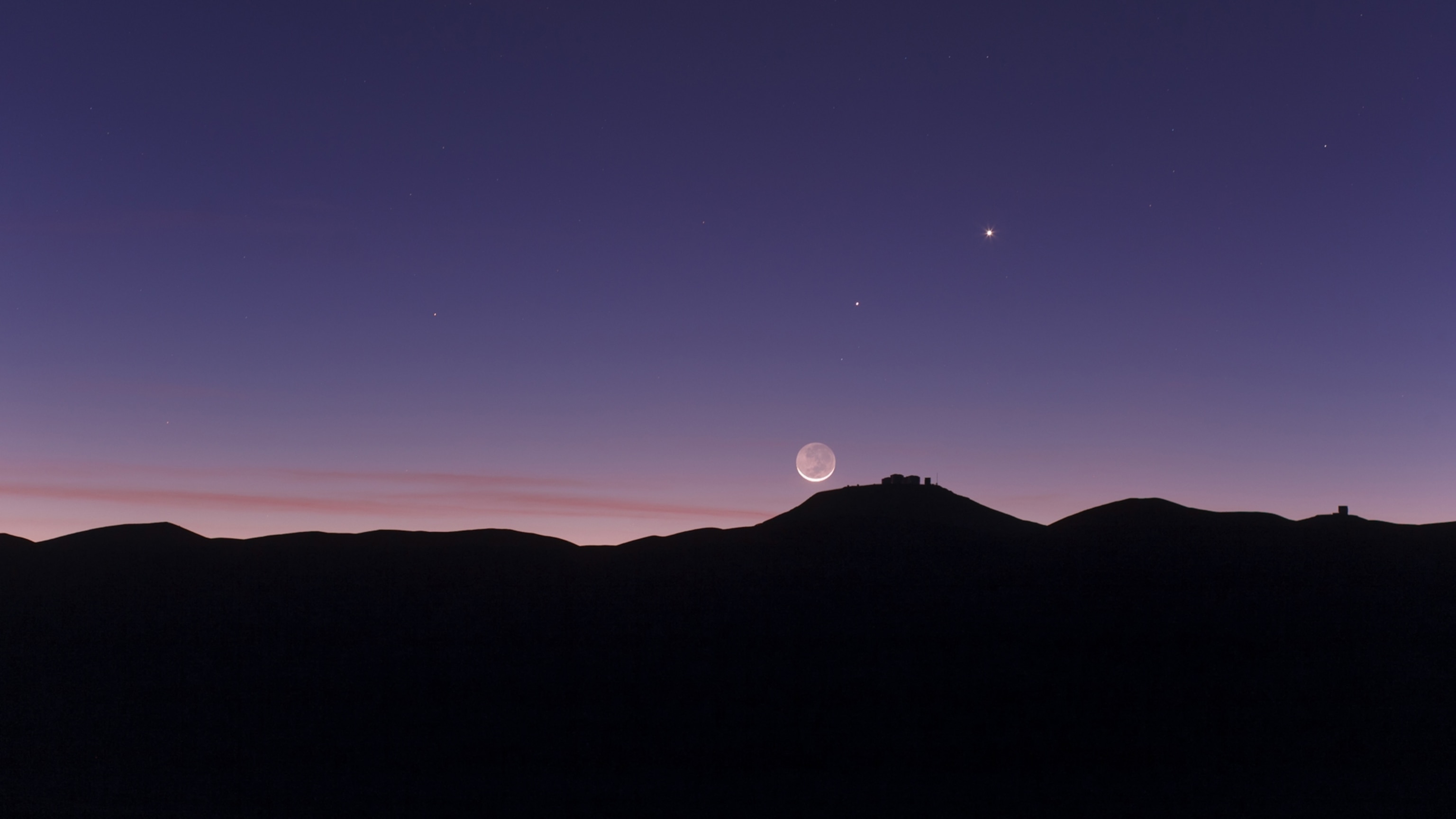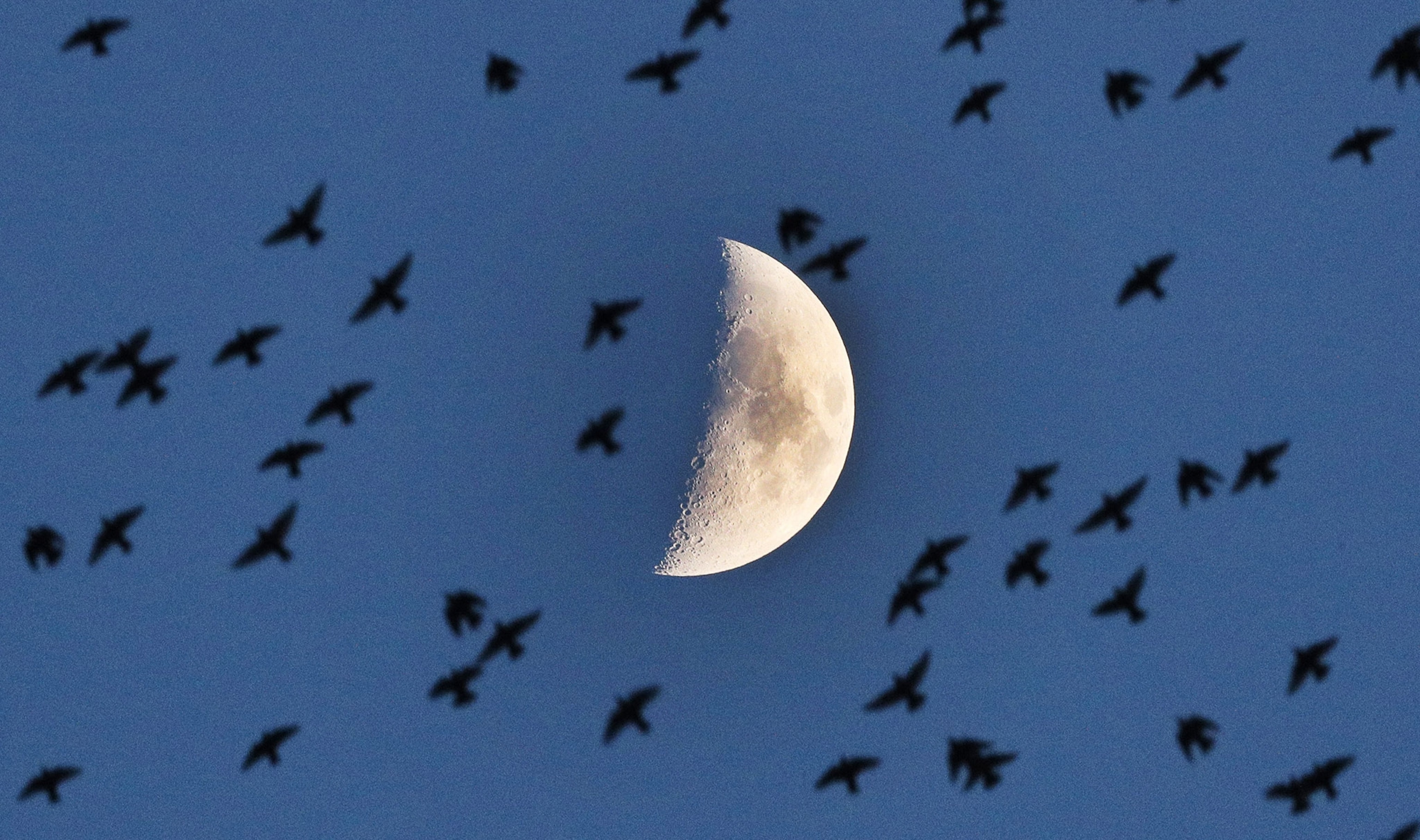
Phases of the moon, explained
Learn about the eight moon phases, as well as the origins of the many names given to each month’s full moon.
Earth’s moon phases cycle from month to month, waning and waxing in its constant transformation from new moon to full moon and back again.
This lunar cycle happens in part because the moon does not produce its own light; the silvery glow we see comes from the sunlight reflecting off the moon’s monochrome surface.
Another factor that causes lunar phases is a gravitational quirk called tidal locking, which governs our view of the moon. In essence, it takes roughly the same amount of time for the moon to spin once on its axis as it takes for our celestial companion to complete its lunar cycle around Earth, which is about 27.3 days.
That means the same side of the moon always faces Earth, although both sides get illuminated as the moon orbits, so there is no perpetual dark side of the moon.
As the moon, Earth, and the sun go through their orbital dance, the part of the moon that’s illuminated by the sun moves in and out of our view, creating a predictable series of moon phases.
In any given month we see eight distinct phases of the moon, defined by how much of the lunar disk is illuminated from our perspective (Northern Hemisphere or Southern Hemisphere) and whether the moon is heading toward or away from being full. Here are all eight of the moon’s phases in order.
(The moon’s darkest corners are a mystery. This image offers a striking new glimpse.)
What are the moon phases

New moon
During this phase the moon is between Earth and the sun, which means none of the lunar half we see is illuminated, and the moon becomes nearly invisible in the night sky. We can see the moon in this phase only during a solar eclipse.
Waxing crescent
As the moon’s illuminated surface increases, it enters a stage known as waxing. It remains a crescent as long as it’s less than half full.

First quarter
This is the phase when half of the moon is illuminated and the percentage of the lit surface is still increasing.
Waxing gibbous
When the moon is more than half full and its illuminated surface is still increasing, it’s called waxing gibbous. The word “gibbous” comes from the Latin for “hump” and has been used for centuries to describe rounded or convex shapes, like swollen eyes or the back of a camel.
Full moon
In this phase, the moon is behind Earth with respect to the sun, and its face is fully illuminated. This is when we can sometimes see lunar eclipses.

Waning gibbous
This is the stage when the moon is more than half lit, but the illuminated surface we can see is decreasing.
Last quarter
During this phase, the moon is once again half illuminated, but the lit area that’s visible is on the decline.
Waning crescent
As the next new moon nears, the moon shrinks back to a crescent that’s less than half full.


Types of full moons by month
One of the most dramatic sights in the night sky—and inspiration for poets, artists, and lovers for millennia—full moons captivate us like nothing else.
Full moons occur every 29.5 days or so, as the moon moves to the side of Earth directly opposite the sun.
For millennia, humans have used the movement of the moon to keep track of the passing year and set schedules for hunting, planting, and harvesting.
Ancient cultures the world over have given these full moons names based on the behavior of the plants, animals, or weather during that month. Here are the monthly full moons and their defining characteristics.
January: Wolf moon
Native Americans and medieval Europeans supposedly named January’s full moon after the howling of hungry wolves lamenting the midwinter paucity of food. Other names for this month’s full moon include old moon and ice moon.
February: Snow moon
The typically cold, snowy weather of February in North America earned this full moon its name. Other common names include storm moon and hunger moon.
March: Worm moon
This last full moon of winter was named the worm moon after the worm trails that would appear in the newly thawed ground. Other names include chaste moon, death moon, crust moon (a reference to snow that would become crusty as it thawed during the day and froze at night), and sap moon, after the tapping of the maple trees.
(Can the moon influence human health? Surprising new research suggests it might.)
April: Pink moon
Northern Native Americans call April’s full moon the pink moon after a species of early blooming wildflower. In other cultures, this moon is called the sprouting grass moon, the egg moon, and the fish moon.
May: Flower moon
May’s abundant blooms give its full moon the name flower moon in many cultures. Other names include the hare moon, the corn planting moon, and the milk moon.
June: Strawberry moon
In North America, the harvesting of strawberries in June gives that month’s full moon its name. Europeans have dubbed it the rose moon, while other cultures named it the hot moon for the beginning of summer heat.
(Learn why the ‘honey’ moon is shrouded in superstition)
July: Buck moon
Male deer, which shed their antlers every year, begin to regrow them in July, hence the Native American name for July’s full moon. Other names include thunder moon, for the month’s many summer storms, and hay moon, after the July hay harvest.
August: Sturgeon moon
North American fishing tribes called August’s full moon the sturgeon moon, since the species was traditionally abundant during this month. It’s also been called the green corn moon, the grain moon, and the red moon for the reddish hue it often takes on in the summer haze.
September: Harvest moon
The most familiar named moon, September’s harvest moon refers to the time of year after the northern autumn equinox when crops are gathered. Other names include the corn moon and the barley moon.
(Here’s what makes a harvest moon so special)
October: Hunter’s moon
The first moon after the harvest moon is the hunter’s moon, so named as the preferred month to hunt summer-fattened deer and fox unable to hide in now bare fields.
The hunter’s moon is also particularly bright and long-lasting in the sky, giving hunters the opportunity to stalk prey at night. Other names include the travel moon and the dying grass moon.
November: Beaver moon
There is disagreement over the origin of November’s beaver moon name. Some say it comes from Native Americans setting beaver traps during this month, while others say the name comes from the heavy activity of beavers building their winter dams. Another name is the frost moon.
December: Cold moon
The coming of winter earned December’s full moon the name cold moon. Other names include the long night moon and the oak moon.
(This rare ‘super blue blood moon’ hadn’t been seen in 35 years)
Blue moons
Blue moons are not actually blue, and despite the common turn of phrase, they are not especially rare. While the precise definition has changed over the years, the term “blue moon” is commonly used today to describe a second full moon appearing in a calendar month, which happens every two and a half years, on average.
Supermoons
The moon’s orbit around Earth is not a perfect circle, and its distance to our planet changes over the course of an orbital cycle.
